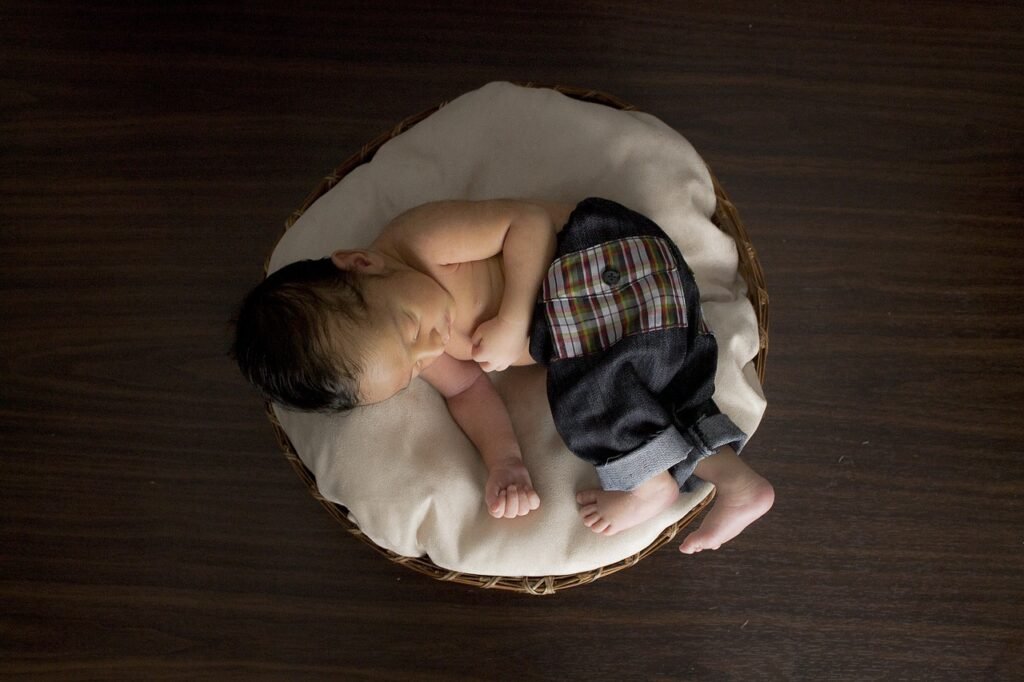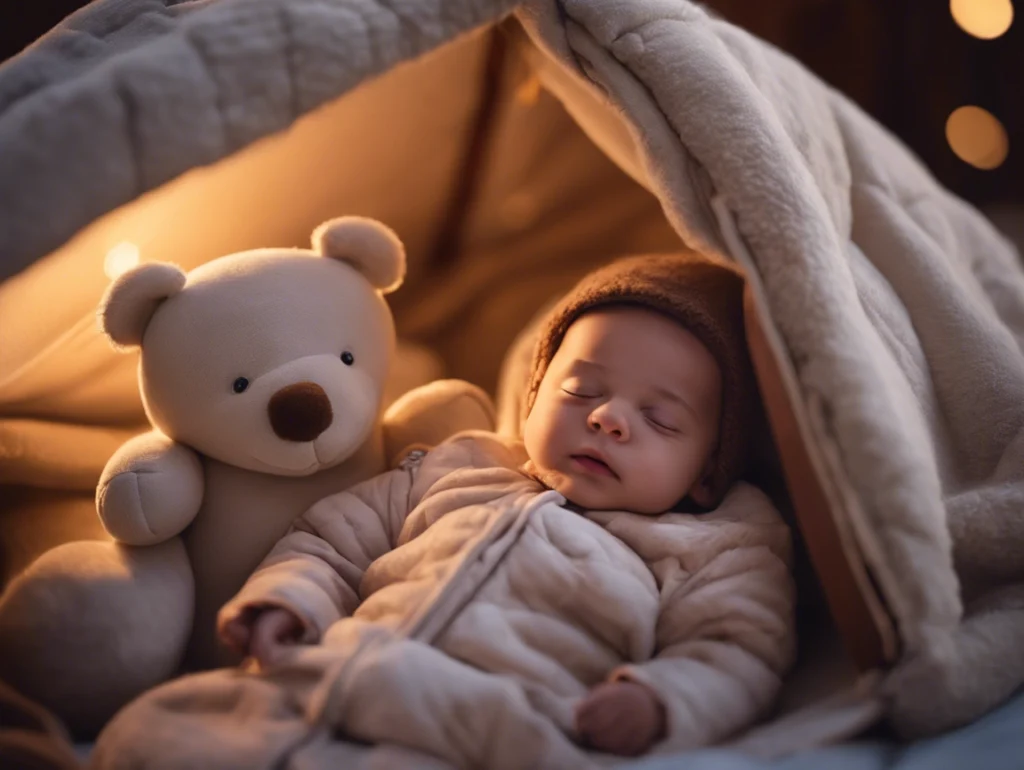A baby nest is a versatile and cozy accessory that gives your baby a safe, snug space to rest, lounge, or play. But like any baby product, a baby nest is no stranger to messes—spit-ups, diaper leaks, and snack crumbs are all part of the parenting journey. The key to keeping your baby nest fresh, hygienic, and long-lasting lies in proper cleaning and maintenance.
In this guide, we’ll walk you through everything you need to know about cleaning and maintaining your baby nest. From regular care routines to tackling stubborn stains, we’ll ensure your baby’s nest remains as good as new. Let’s dive in!

Why Cleaning Your Baby Nest Is Essential
Your baby’s nest is more than just a comfy spot; it’s a sanctuary. Regular cleaning ensures:
- Hygiene: Removes bacteria, allergens, and dust mites.
- Comfort: Keeps the materials soft and fresh.
- Longevity: Maintains the structure and appearance of the nest over time.
(A well-maintained baby nest is a happy nest, and a happy nest = a happier baby.)
Materials Matter: Understanding Your Baby Nest
Before you start cleaning, it’s important to understand the materials used in your baby nest. This will help you choose the right cleaning methods and avoid damage.
| Material | Common Usage | Cleaning Requirements |
|---|---|---|
| Organic Cotton | Covers, lining | Machine washable; gentle cycle |
| Polyester | Padding, outer covers | Hand or machine washable; low heat dry |
| Memory Foam | Inner padding, support | Spot clean only; avoid submerging |
| Bamboo Fabric | Covers, liners | Gentle machine wash; air dry preferred |
(Always check the care label for manufacturer instructions before cleaning.)
Step-by-Step Cleaning Guide
Here’s how to clean your baby nest like a pro:
1. Detach Removable Parts
Most baby nests have removable covers or liners. Take these off before cleaning to avoid soaking the entire nest unnecessarily.
2. Machine Wash the Covers
For fabric covers:
- Use a gentle cycle with cold water.
- Wash separately to avoid color bleeding.
- Use a baby-safe, fragrance-free detergent.
(Your baby doesn’t need lavender-scented covers—they already smell like heaven.)
3. Spot Clean the Base
The base, especially if made of foam, should never be submerged in water. Instead:
- Use a mild detergent mixed with warm water.
- Dip a clean cloth in the solution and gently scrub any stains.
- Use a dry towel to blot excess moisture and let air dry.
4. Air Dry Thoroughly
To prevent mold or mildew, ensure all parts of the nest are completely dry before reassembling. Avoid high heat, which can shrink fabrics or damage foam.
5. Vacuum Regularly
For nests with fixed cushions, vacuum weekly to remove crumbs, pet hair, or dust. Use a handheld vacuum or soft brush attachment.
6. Treat Stubborn Stains
For tougher stains like spit-up or diaper leaks:
- Pre-treat the stain with a mixture of baking soda and water.
- Let it sit for 15 minutes.
- Gently scrub with a soft-bristled brush before washing.
(Avoid bleach or harsh chemicals—they can irritate your baby’s sensitive skin.)
Maintaining Your Baby Nest for Longevity
Cleaning isn’t the only way to keep your baby nest in great shape. Regular maintenance ensures it lasts through all the cuddles and naps.
1. Rotate the Nest
To prevent uneven wear, rotate the nest regularly, especially if your baby has a favorite lounging position.
2. Avoid Direct Sunlight
Extended exposure to sunlight can fade colors and weaken fabrics. Store the nest in a shaded, cool area when not in use.
3. Use a Protective Liner
Place a waterproof liner or sheet under your baby to catch leaks or spills. This adds an extra layer of protection for the nest’s padding.
4. Store Properly
If you’re not using the nest for a while:
- Clean it thoroughly.
- Store it in a breathable bag to prevent dust buildup.
Quick Tips for Common Baby Nest Problems
| Problem | Solution |
|---|---|
| Odor Build-Up | Sprinkle baking soda on the nest; let sit for 30 minutes before vacuuming. |
| Flattening Padding | Gently fluff the padding or add a thin cushion layer. |
| Stubborn Stains | Use a baby-safe stain remover or natural vinegar solution. |
FAQs: Cleaning and Maintaining a Baby Nest
Q1: How often should I clean my baby nest?
A: Wash removable covers weekly or after major spills. Spot-clean the base as needed, and vacuum regularly to maintain hygiene.
Q2: Can I put the entire baby nest in the washing machine?
A: No, only machine-wash removable covers. Foam bases and fixed cushions should be spot-cleaned to prevent damage.
Q3: What detergents are safe for baby nest cleaning?
A: Use a baby-safe, hypoallergenic detergent free of harsh chemicals, dyes, or fragrances.
Q4: How do I remove spit-up stains from the baby nest?
A: Pre-treat with baking soda paste or a vinegar-water solution, then scrub gently and rinse with a damp cloth.
Q5: How can I make my baby nest last longer?
A: Rotate the nest regularly, use a waterproof liner, and store it in a cool, dry place when not in use.
(For more baby care tips, explore our Nighttime Cloth Diapering Strategies for leak-free sleep solutions.)
Conclusion: Keep Your Baby Nest Fresh and Functional
A clean and well-maintained baby nest ensures that your little one always has a cozy, hygienic space to relax. By following these cleaning and maintenance tips, you’ll not only extend the life of your baby nest but also provide a healthier environment for your baby.
So, roll up those sleeves, grab that gentle detergent, and show your baby nest some love—it’ll repay you with countless comfy moments for your little one.
(Ready to keep all your baby gear in tip-top shape? Check out our Ultimate Guide to Eco-Friendly Baby Products for sustainable and practical parenting tips!)


